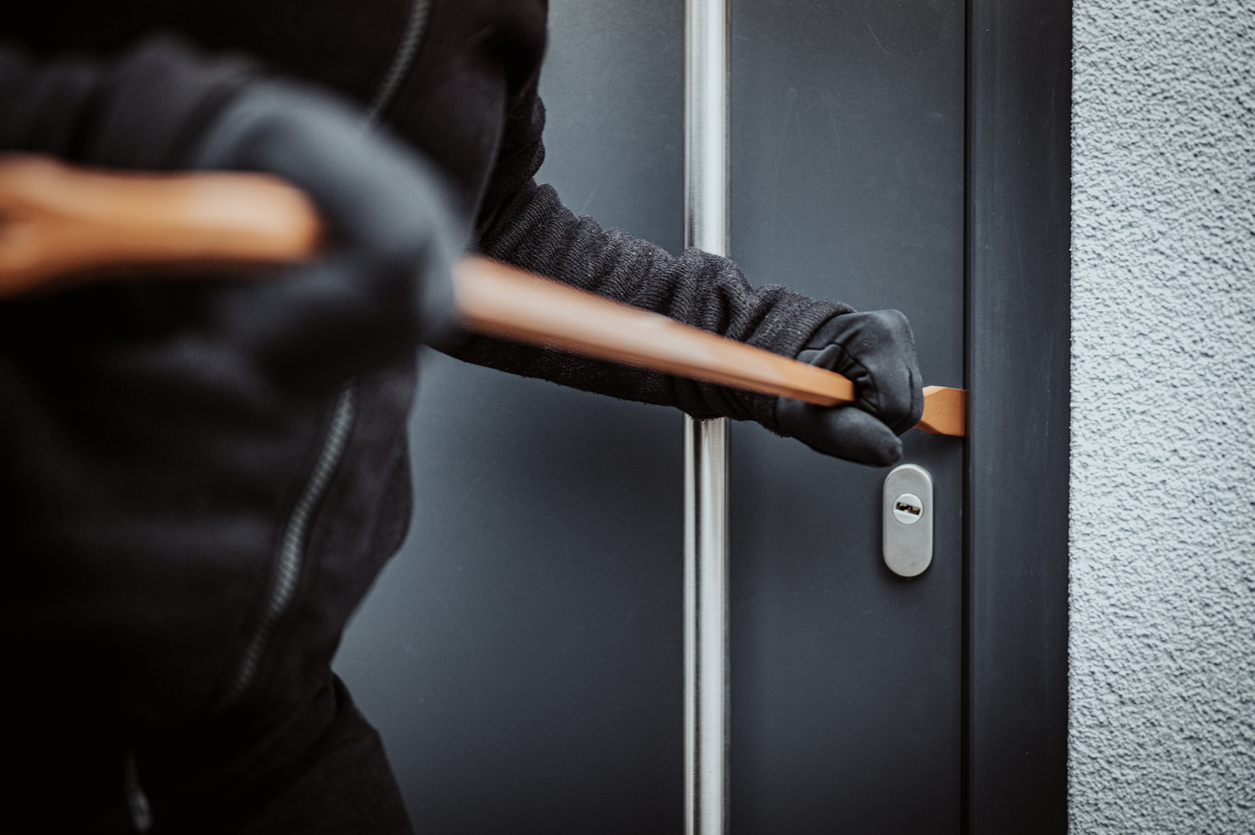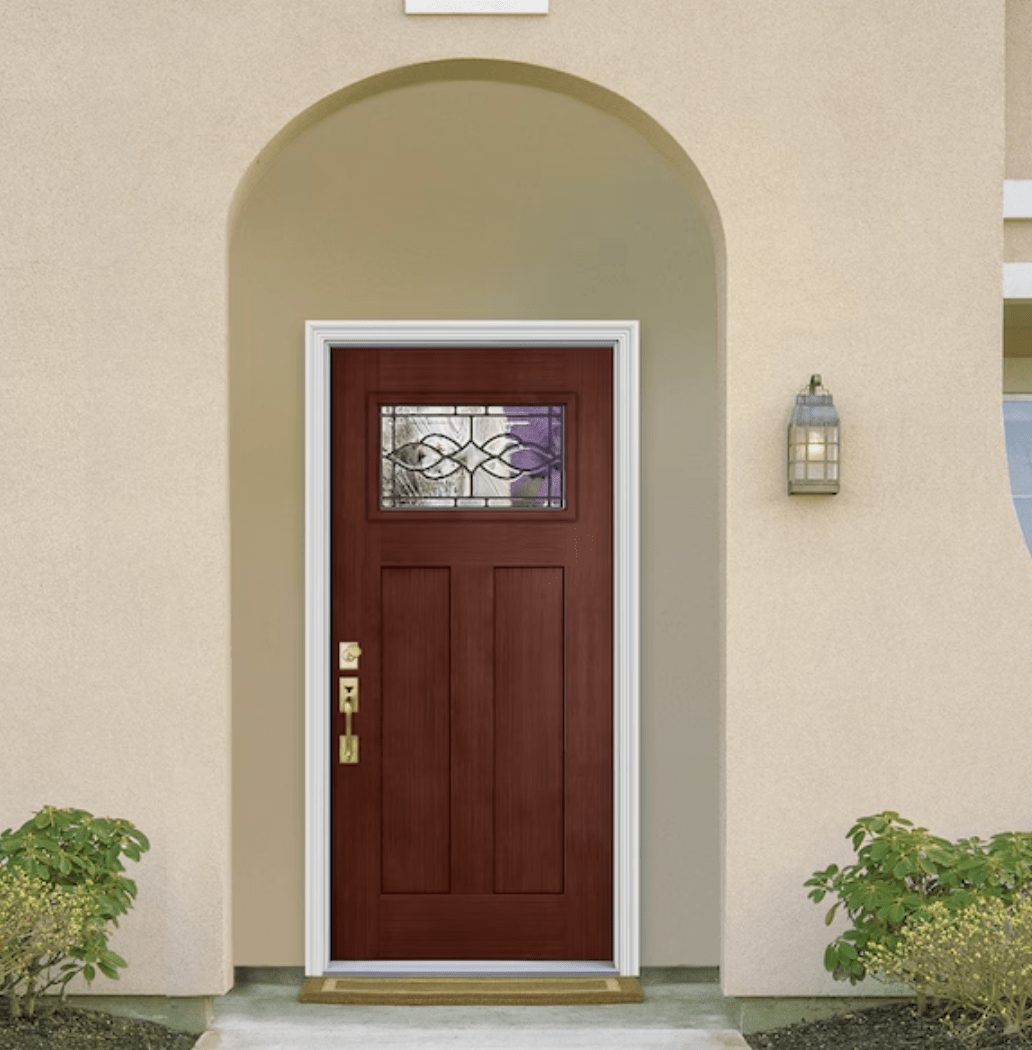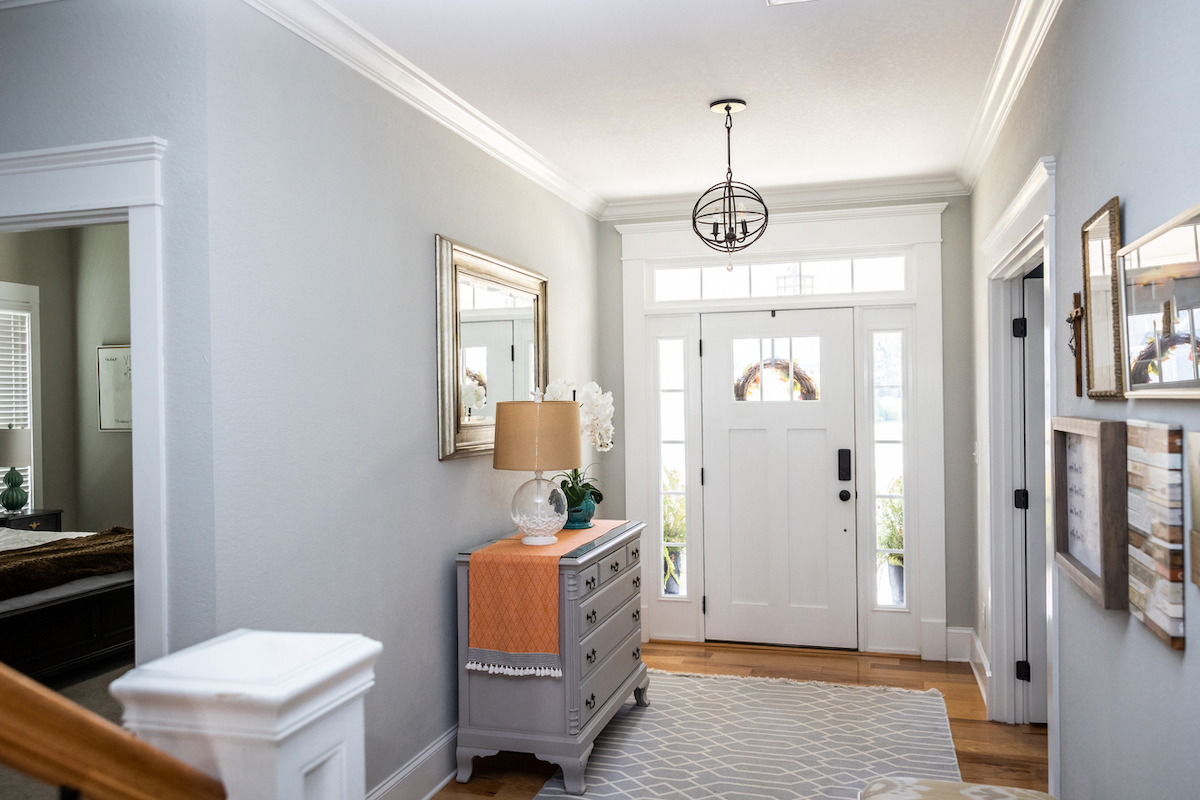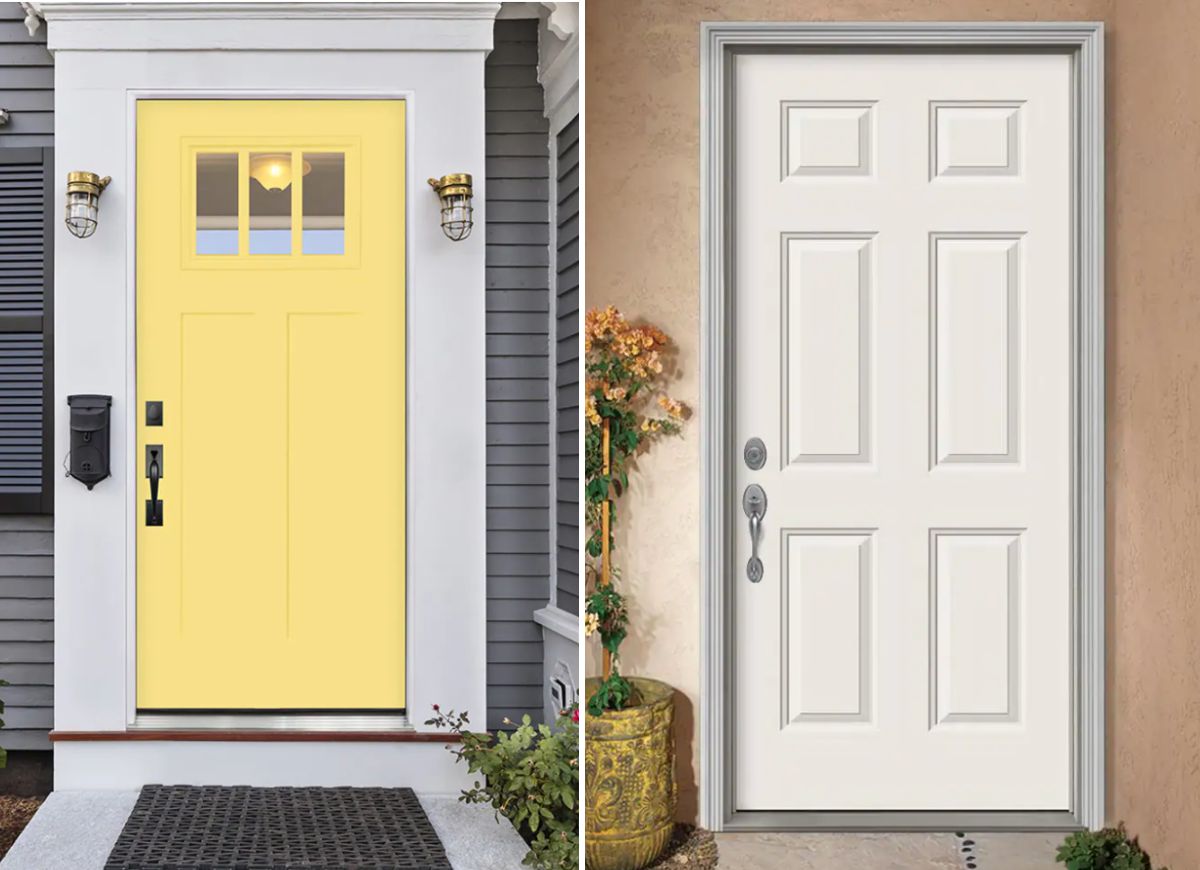We may earn revenue from the products available on this page and participate in affiliate programs. Learn More ›
The front door is more than merely an entry into your house. It’s part of the exterior decor, offering an opportunity to add personality and set the tone for what lies within. The front door also enhances curb appeal and can increase your home’s value.
Beyond that, the front door provides privacy and security, keeping the world and all its noise out while confining the energy usage inside. The front door should make your family feel safe and protected from all dangers, natural and manmade.
Whether you’re looking for the safest front door or the most stylish, we’ll tackle the common question of what is the best material for the front door.
RELATED: The Best Storm Doors for Inclement Weather Conditions
Both types of entry doors feature a similar core, but the exterior shells are very different.
Unlike the classic solid wood door, both steel and fiberglass doors are constructed in layers. Both of them typically start with a core of either wood or polyurethane insulating foam, which helps with soundproofing and energy efficiency. From there, though, they differ significantly.
One key difference between fiberglass and steel doors lies in their outer shell. The exterior of a steel door is made of heavy-gauge galvanized steel, while fiberglass doors have a high-impact, compression-molded fiberglass shell.
In the age-old debate of steel vs. fiberglass exterior doors, it’s worth noting that each type has advantages. Fiberglass can mimic the look of various wood grains; it’s customizable, low-maintenance, and weatherproof. Steel tends to be more affordable; what it lacks in custom design choices, it makes up for in strength and safety.
Steel doors are considered to be better for security.

When it comes to front door security, it’s hard to beat steel—literally. Hit vigorously, steel doors may dent, but will rarely break or warp. Since it is nearly impervious to damage by force, steel is one of the strongest types of doors for security.
Fiberglass, on the other hand, is a lightweight material that can fracture when impacted with extreme force, rendering it more vulnerable than steel when it comes to break-ins.
Fiberglass and steel doors both perform well in terms of energy efficiency.
One of the biggest advantages of fiberglass doors is the cost savings they provide, thanks to their energy efficiency. Fiberglass doesn’t expand and contract like some materials, thus providing excellent insulation throughout seasonal changes. Some fiberglass doors are so energy-efficient, they have earned an Energy Star rating and qualify for tax credits.
While metal is known to transfer both heat and cold, the insulating core of today’s steel doors puts them on a near-equal footing to fiberglass when it comes to insulation value. For example, according to the U.S. Department of Energy, windowless steel and fiberglass doors both have insulation values between R-5 and R-6 or higher. In comparison, windowless wood doors typically have an R-value somewhere around R-2 to R-3.
Both types of doors come in a variety of styles, but many homeowners prefer the look of fiberglass.

Today’s fiberglass doors offer a greater range of designs compared to steel, and can achieve a wood look that’s nearly indistinguishable from the real thing. Opting for stain rather than paint can further pronounce the wood-grain texture. Metal doesn’t provide quite the same illusion, as small dents and dings can give away the material. And if the galvanized coating wears off or is scratched, the resulting rust is a telltale sign that the door is not wood.
Homeowners often choose fiberglass to integrate windows and add more natural light to their entryway. Steel doors can come with windows, too, but it lessens the material’s advantage when it comes to security.

Tried-and-True Advice
“When I installed my first fiberglass door, I didn’t think much about the threshold. Big mistake! I ended up with a slight gap at the bottom, and that turned into an annoying draft come winter. After that, I used an adjustable threshold on my next door install. They make it so much easier to get a tight seal at the bottom, which helps keep out both cold air and water. If you’re tackling a door installation yourself, it’s definitely worth the extra investment.”
—Paul Rankin, Contributing Writer and Editor
Steel front doors are less expensive and offer a higher return on investment compared with fiberglass.
The purchase and installation cost of steel front doors is typically less than fiberglass or solid-wood doors. The size and weight of a steel door factors into the cost. A purchase price of $1,300 isn’t unusual, but the average is more often between $200 and $1,000.
One of the disadvantages of fiberglass doors is that they are typically more expensive. Quality and customization can add to the price, with high-end options fetching upward of $3,000.
Properly maintained steel doors can last 30 to 100 years; a steel front door replacement offers a return on investment of 188.1 percent, according to the Remodeling 2024 Cost vs. Value Report. Well-maintained fiberglass doors last only 15 to 20 years. According to the same Remodeling report, a grand entrance fiberglass door with sidelights has an average national ROI of 97.4 percent.
Fiberglass edges out steel in terms of maintenance due to steel’s potential for rust.

Neither fiberglass nor steel doors require a lot of maintenance. Basic care of fiberglass doors includes periodic wiping down or hosing off. The finish can fade over time due to sun exposure, so repainting or re-staining fiberglass doors is necessary from time to time. But because it won’t dent, warp, or decay, fiberglass a good option for high-traffic doorways.
Metal doors usually come from the factory with automotive-grade paint. To prevent corrosion, a front steel door should receive an annual application of linseed oil or car wax. If scratched, dented, or worn, steel will rust unless repainted immediately.


